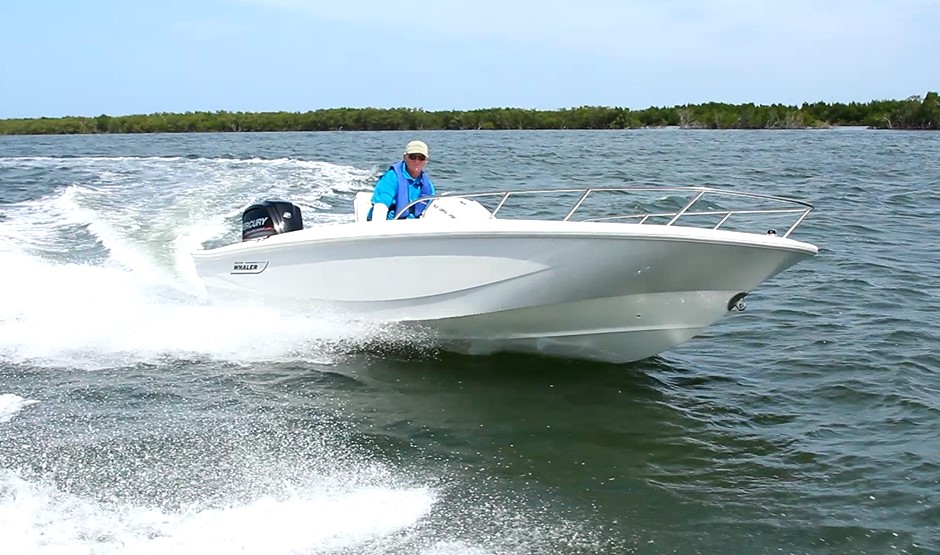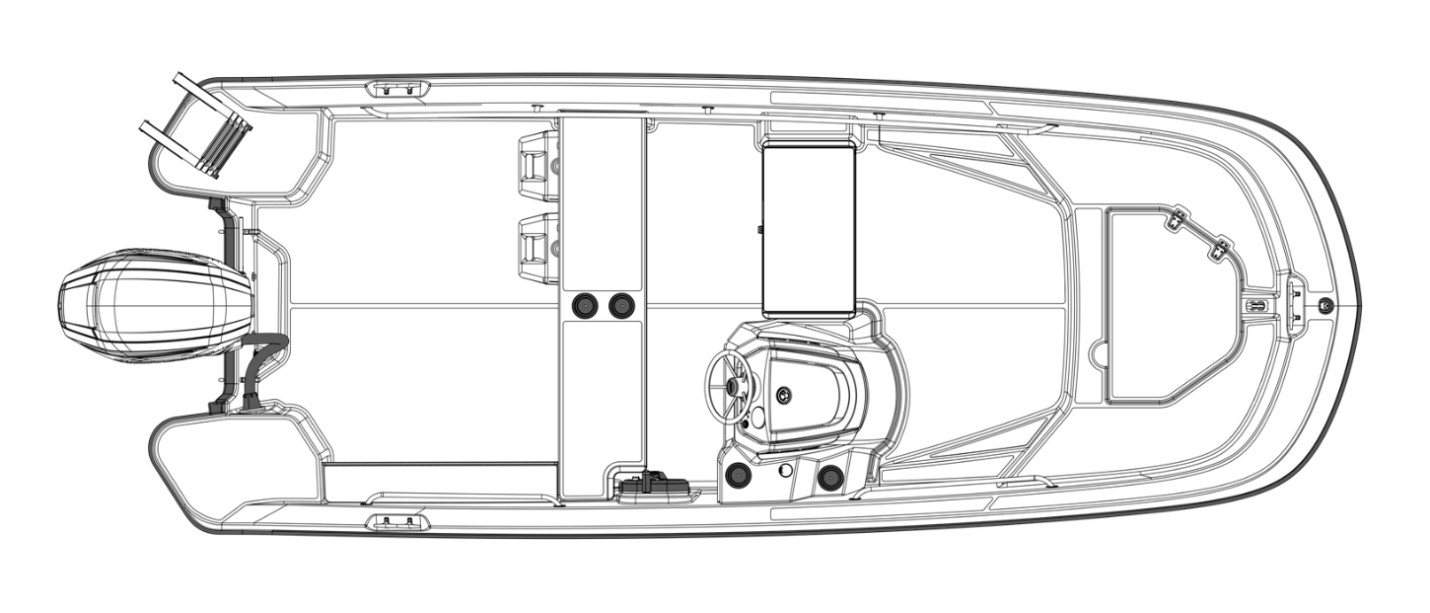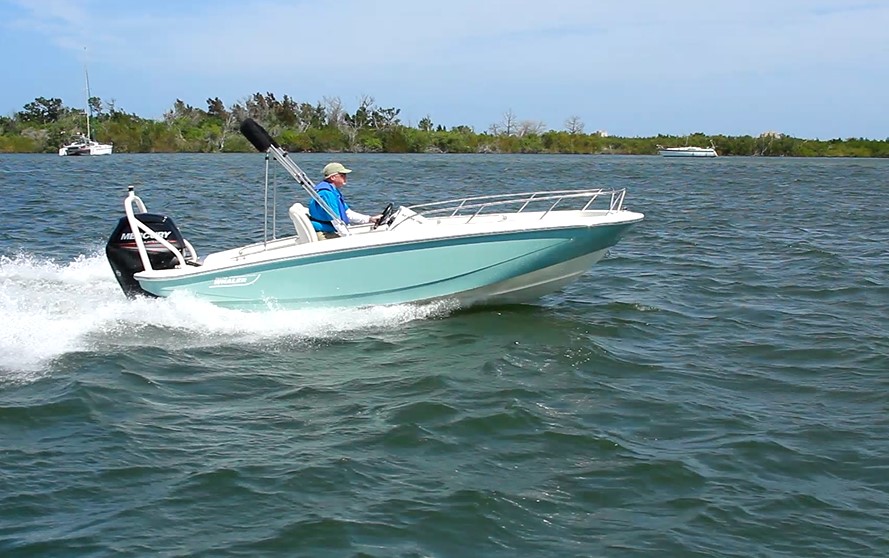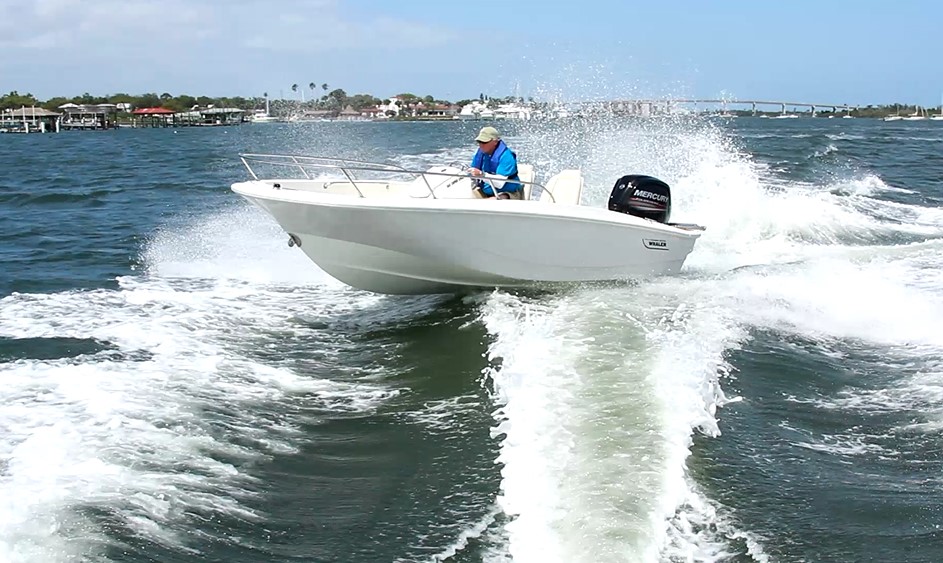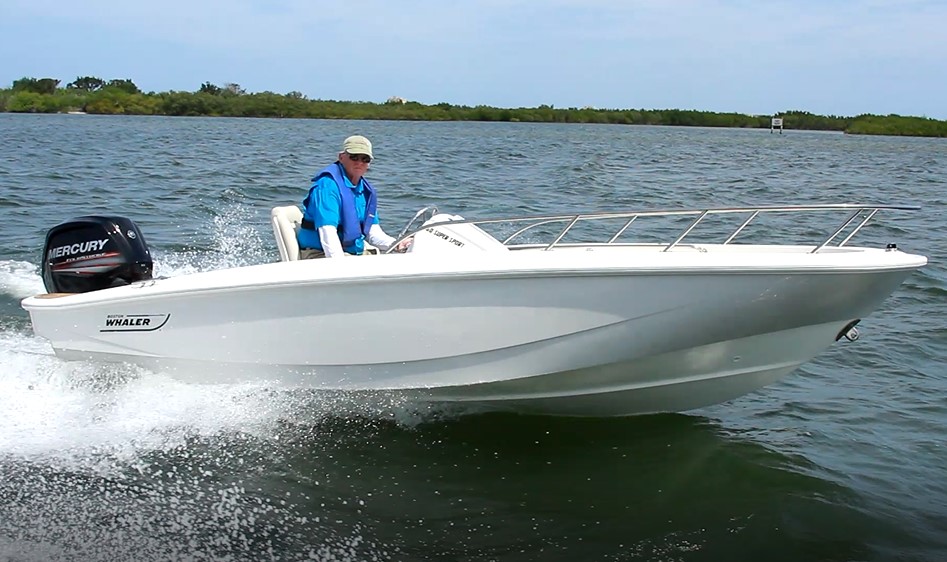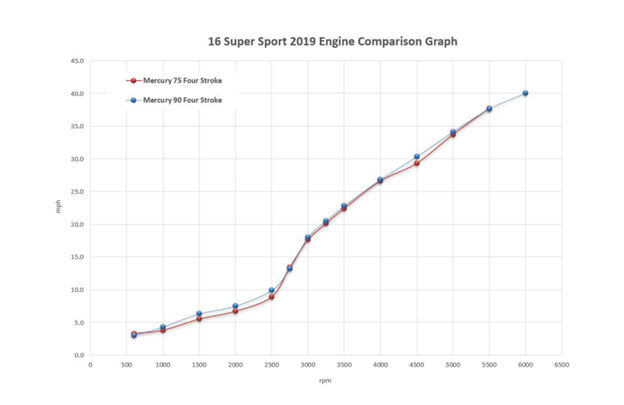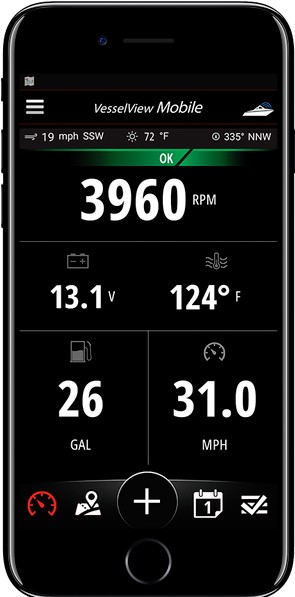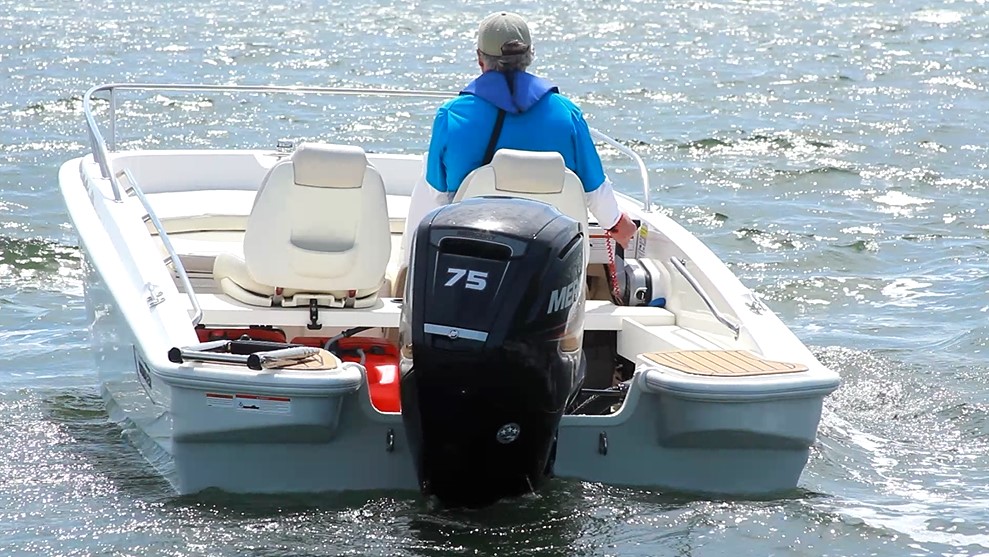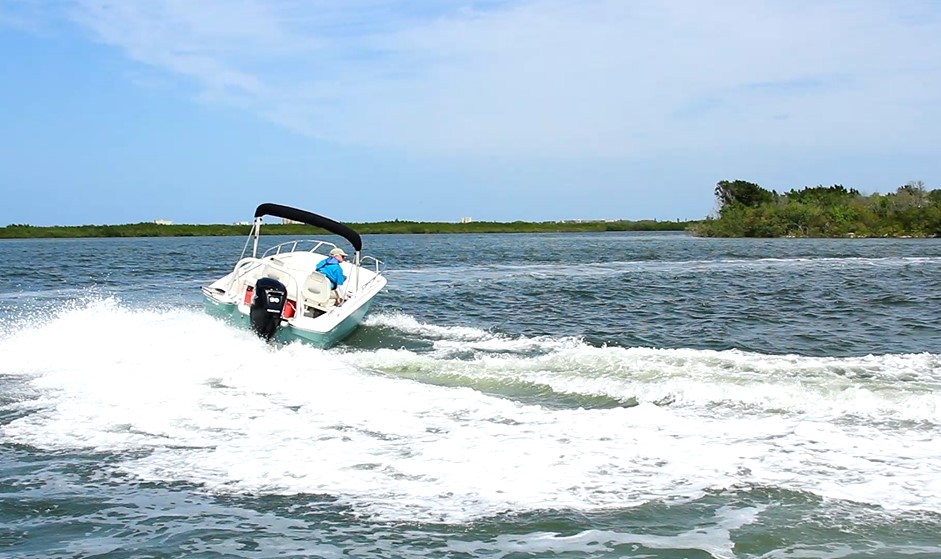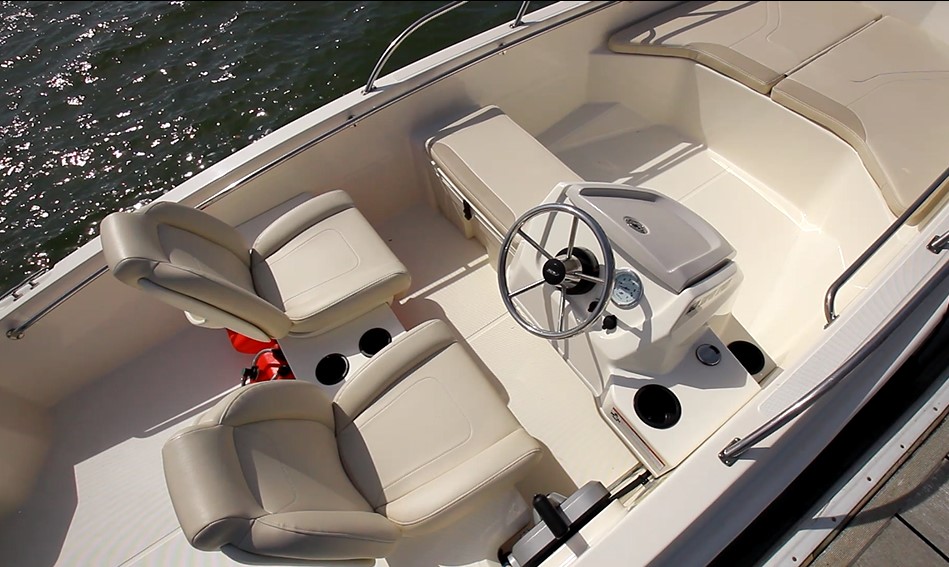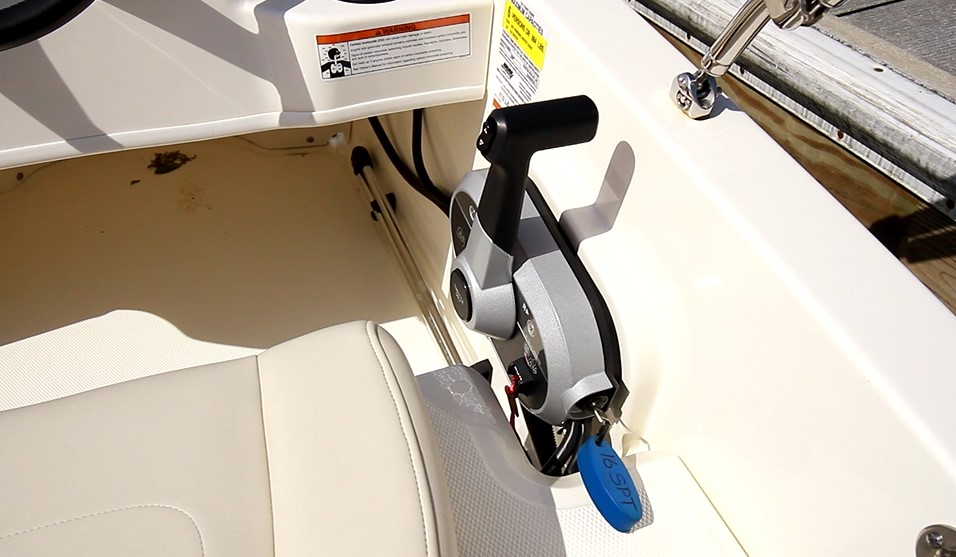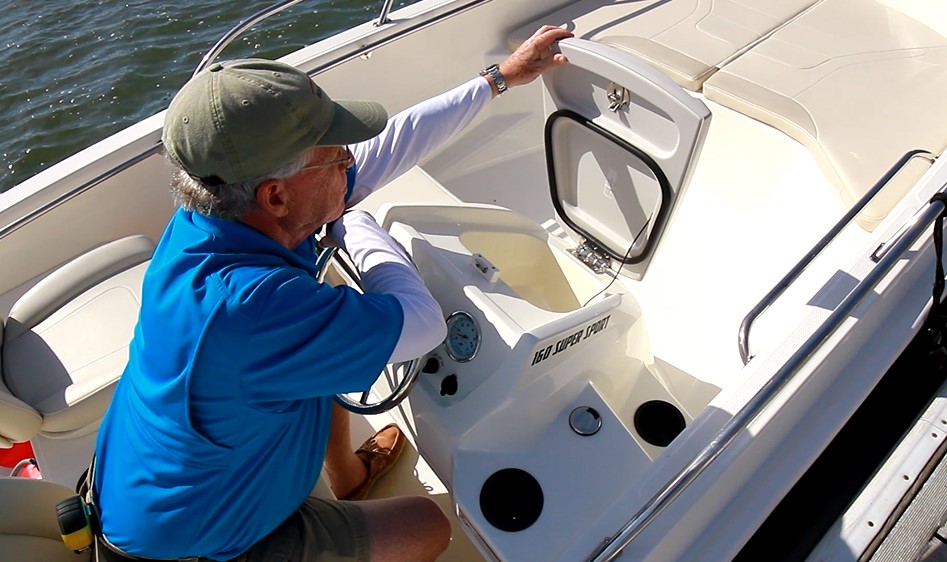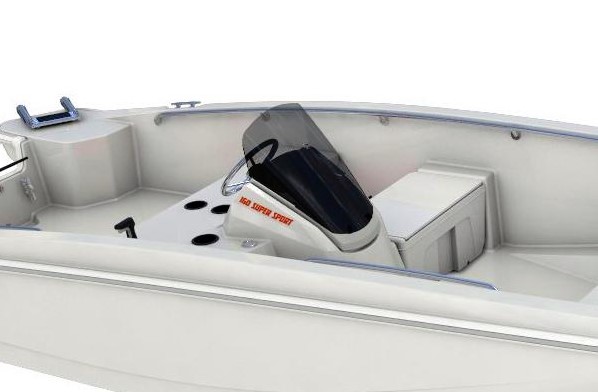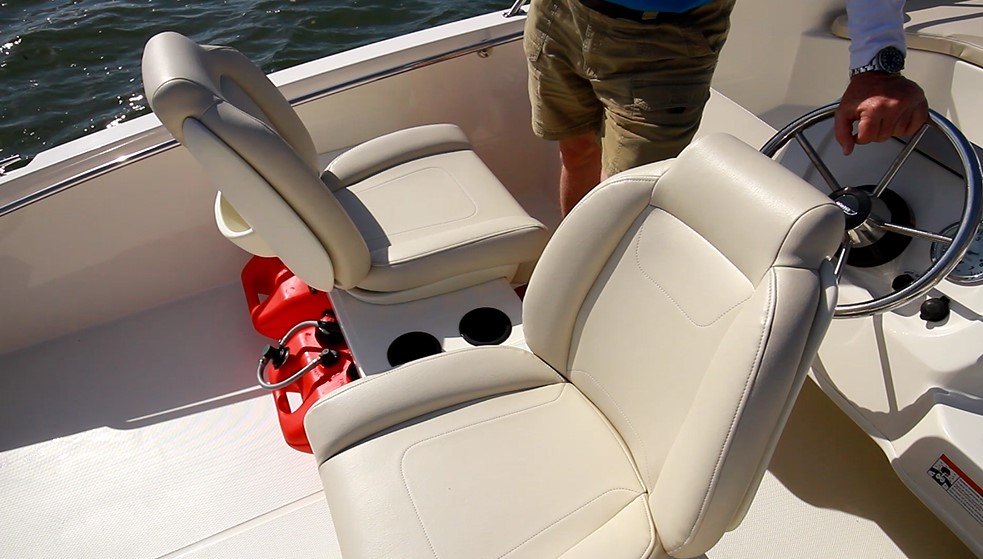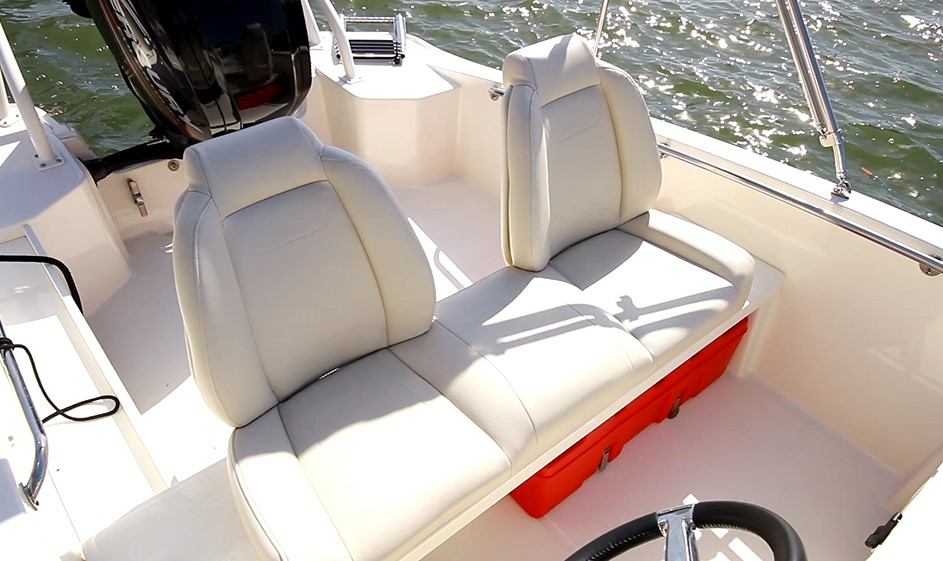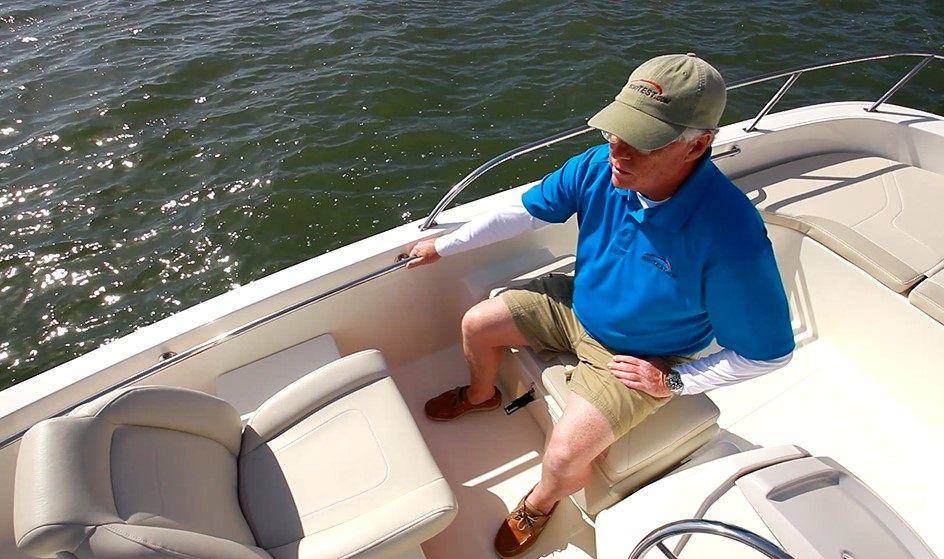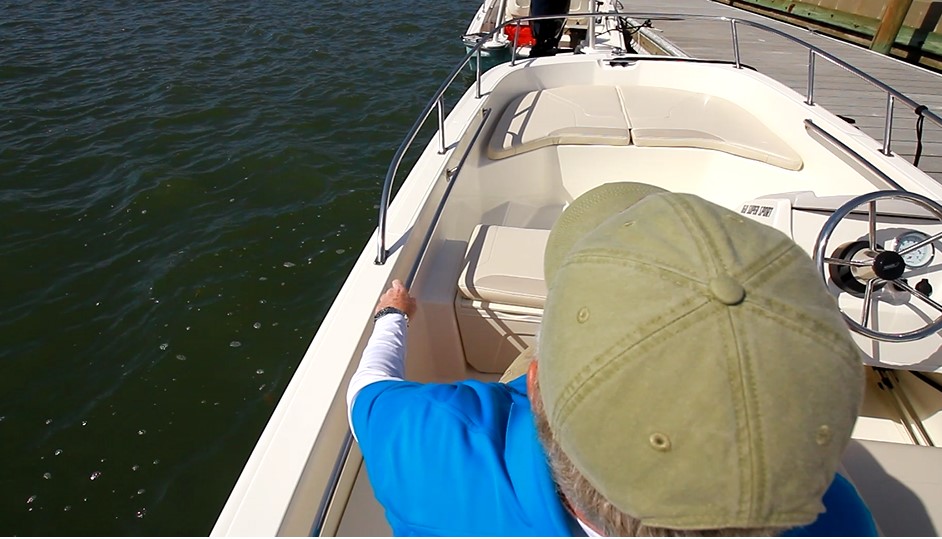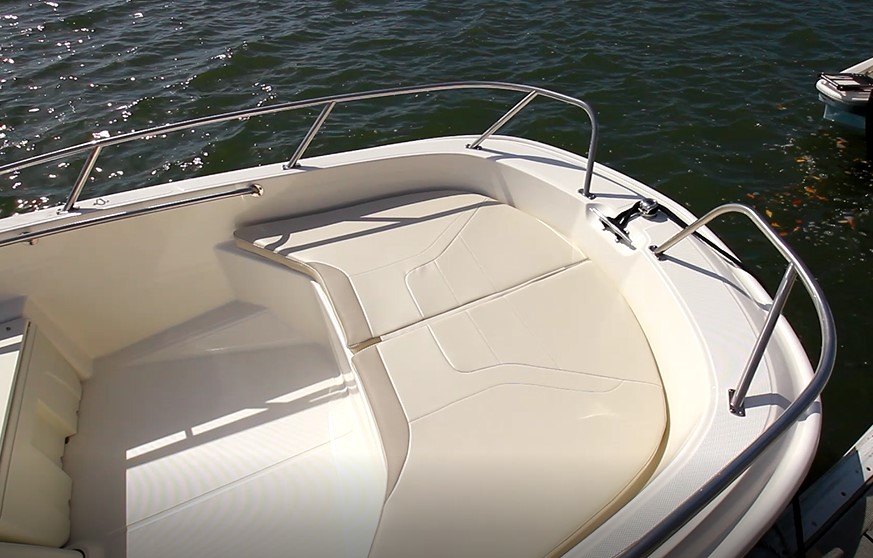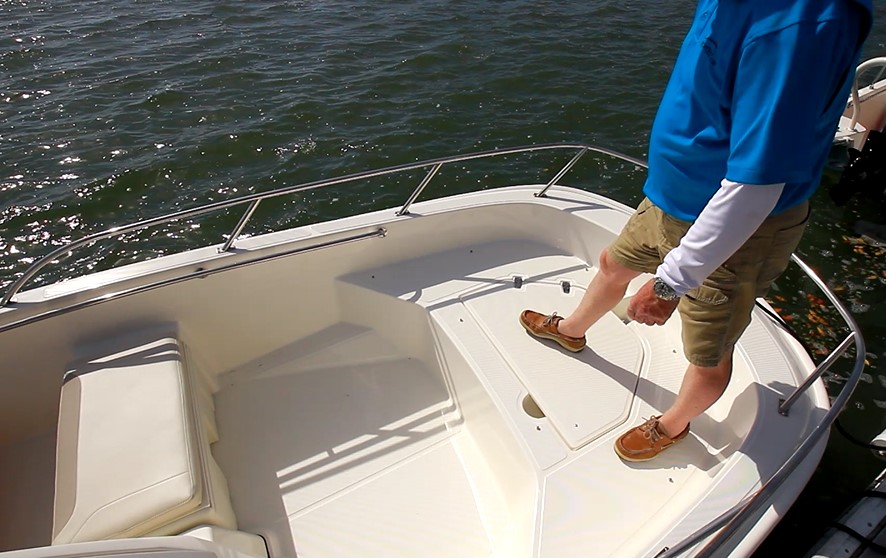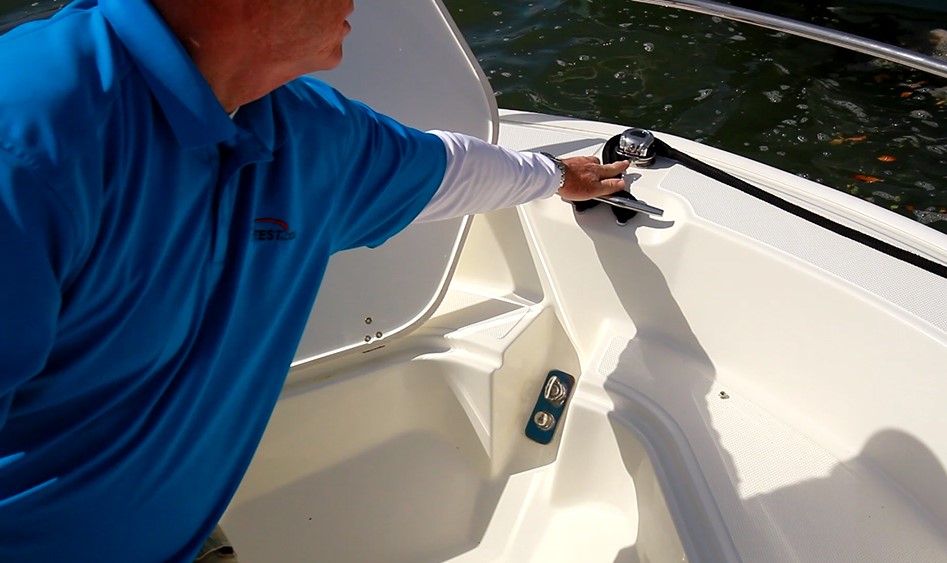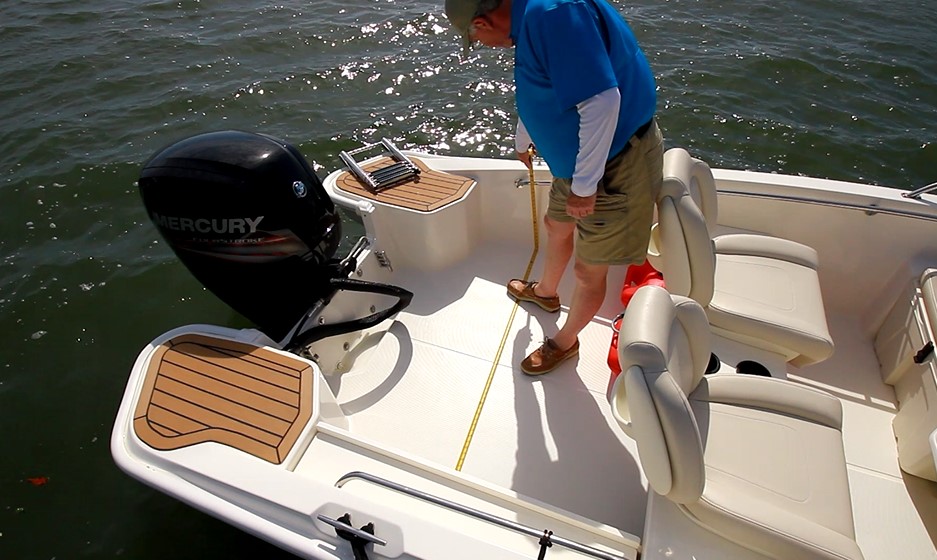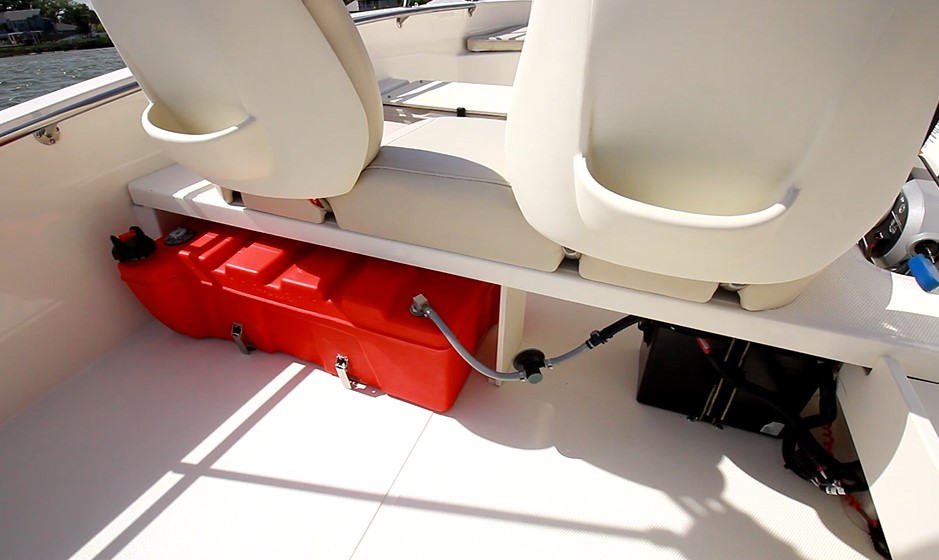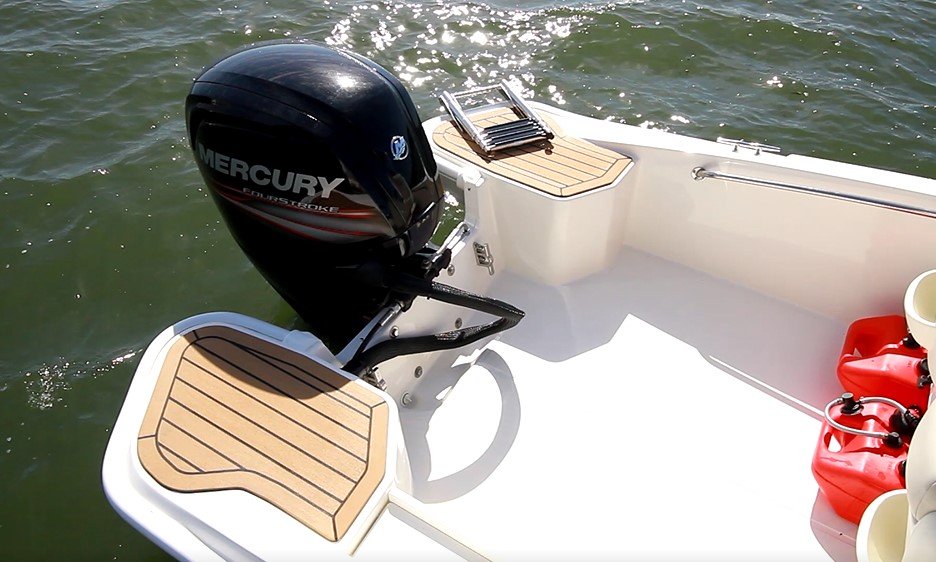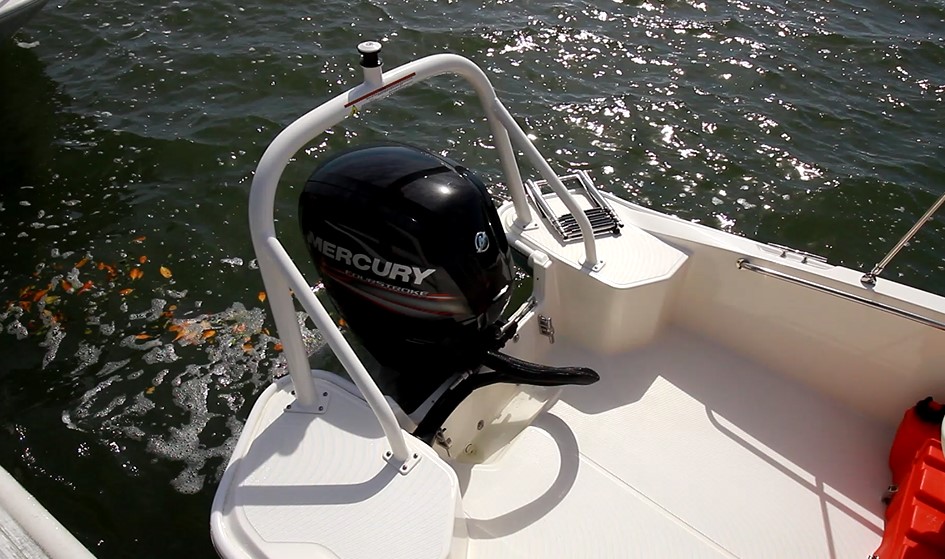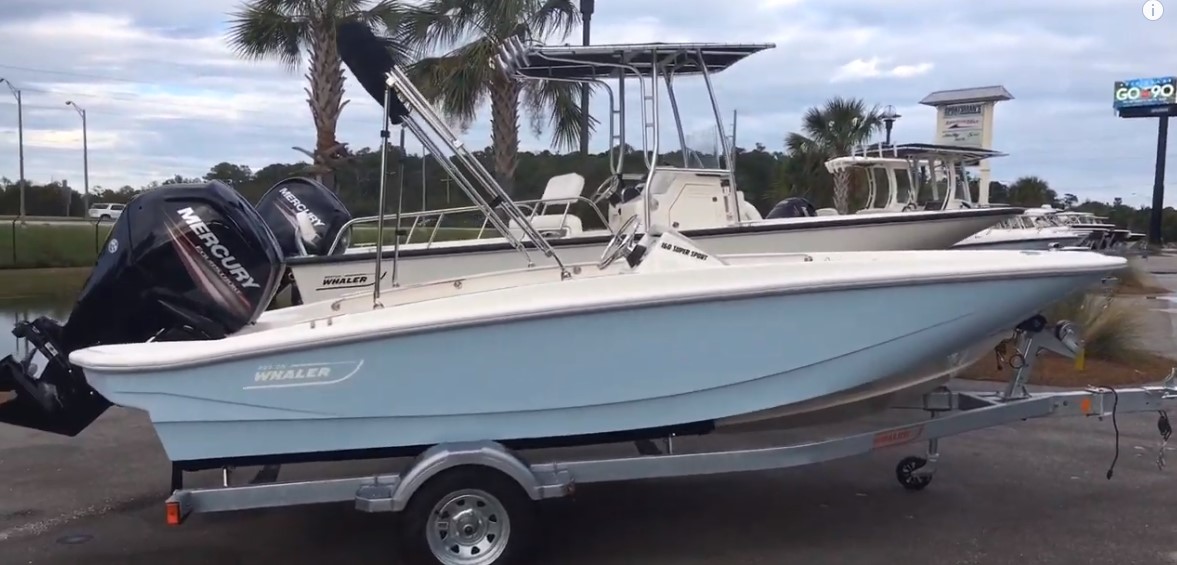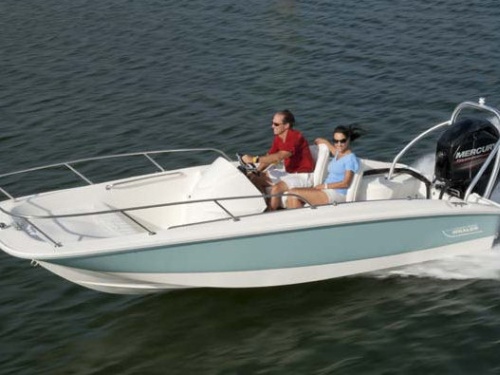Access More Boat Tests
Already have an account? Login
Boston Whaler 160 Super Sport (2019-)
1 x 90-hp Mercury 4-stroke
Brief Summary
Boston Whaler is reintroducing the 160 Super Sport with a new hull design, more comfortable seating, and a host of other options. Still unsinkable, simple, and safe enough to let the kids take her out alone near shore, the boat is rated for six passengers.
Key Features
- Single Mercury 4-stroke outboard
- Side console helm
- European certification C
- Foam-filled – unsinkable
- Twin swim platforms
- Four seating configurations to choose from
Test Results
| RPM | MPH | Knots | GPH | MPG | NMPG | STAT. MILE | NM | dBa |
|---|---|---|---|---|---|---|---|---|
| 700 | 2.6 | 2.2 | 0.4 | 6.4 | 5.5 | 75 | 64.9 | N/A |
| 1000 | 3.5 | 3 | 0.6 | 5.8 | 5.1 | 68 | 59.3 | N/A |
| 1500 | 6 | 5.2 | 1.3 | 4.8 | 4.2 | 56 | 48.8 | N/A |
| 2000 | 7.3 | 6.3 | 1.6 | 4.5 | 3.9 | 53 | 46.1 | N/A |
| 2500 | 8.5 | 7.4 | 2.1 | 4.1 | 3.6 | 49 | 42.2 | N/A |
| 3000 | 13.3 | 11.5 | 2.7 | 4.9 | 4.3 | 57 | 49.9 | N/A |
| 3500 | 22.3 | 19.3 | 3.3 | 6.7 | 5.9 | 79 | 68.6 | N/A |
| 4000 | 26 | 22.6 | 4.1 | 6.3 | 5.5 | 74 | 64.5 | N/A |
| 4500 | 30 | 26.1 | 5.8 | 5.2 | 4.5 | 61 | 52.6 | N/A |
| 5000 | 32.5 | 28.3 | 7.3 | 4.5 | 3.9 | 52 | 45.3 | N/A |
| 5500 | 37.3 | 32.4 | 8.7 | 4.3 | 3.7 | 50 | 43.8 | N/A |
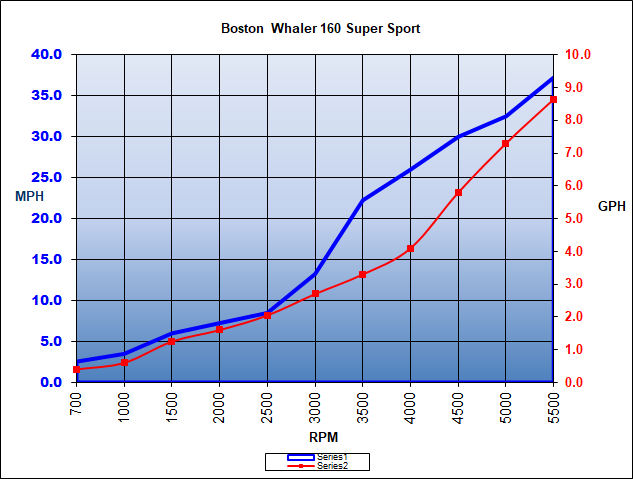
Specifications
| Length Overall | 17' 5'' / 5.31 m |
|---|---|
| Beam |
6' 10'' 2.08 m |
| Dry Weight |
1,060 lbs. 481 kg |
| Tested Weight |
1,917 lbs. 870 kg |
| Draft |
10'' 0.25 m |
| Deadrise/Transom | 15-deg. |
| Max Headroom | open |
| Bridge Clearance |
6' 3'' 1.91 m (max) |
| Weight Capacity |
1,529 lbs. 694 kg |
| Person Capacity | 6 |
| Fuel Capacity |
13 gal. 49 L |
| Water Capacity | N/A |
| Total Weight |
1,917 lbs. 870 kg |
Acceleration Times & Conditions
| Time to Plane | 3.4 sec. |
|---|---|
| 0 to 30 | 5.3 sec. (0to20) |
| Ratio | N/A |
| Props | 13.5 x 15 Spitfire |
| Load | 2 persons, full fuel, no water, 50 lbs. of gear |
| Climate | 65 deg., 45 humid; 15-20 mph; seas: 1' chop |
Engine Options
| Tested Engine |
1 x 90-hp Mercury 4-stroke |
|---|---|
| Std. Power |
1 x 75-hp Mercury ELPT EFI 4-stroke Black engine |
| Opt. Power |
1 x 90-hp Mercury ELPT EFI 4-stroke Black engine |
Contents of Report
- Mission
- Distinguishing Features
- Design
- Construction
- Comparison
- Boat Inspection
- Performance
- 90-HP Performance Numbers
- 75-HP Performance Numbers
- Engine(s)
- Handling
- Helm
- Bow
- Aft
- Optional Equipment
- Observations
The redesigned hull of the Boston Whaler 160 Super Sport with the V-hull replacing the cathedral hulls of yesteryear, rides better.
Mission
The Boston Whaler 160 Super Sport is a simple and safe, low-maintenance day boat for watersports, fishing, and exploring.
Distinguishing Features
- Rectangular topsides
- Foam-filled
Design
The family-friendly skiff retains some of her most notable design attributes. The topsides are still rectangular providing more room, and the side helm console and bench seat are etched into many adults’ memories from childhood. The foam-filled hull is still unsinkable. Gone is the cathedral hull design made famous by Ray Hunt, replaced by a better invention of Hunt’s, the V-hull form. With a 15-degree deadrise at the stern, the boat retains much of its former stability, but now handles better.
Construction
Boston Whaler’s patented Unibond construction technique involves injecting closed-cell liquid foam between the hull and liner where it expands to fill all of the voids, giving the boat her unsinkable attribute. This method also adds some sound insulation properties, and increases strength and impact resistance. The fit-and-finish is excellent.
Comparison
The 160 Super Sport is more expensive than similarly sized boats, but her simple and safe pedigree and solid construction help justify the cost.
Boat Inspection
We had two 160 Super Sports to test, each with different options and engines (90-HP vs 75-hp Mercury 4-stroke outboards) for us to contrast.
Performance
90-HP Performance Numbers:
The Boston Whaler 160 Super Sport has a LOA of 17’5” (5.31 m), a beam of 6’10” (2.08 m), and a draft of 10” (0.25 m) with the engine up. With an empty weight of 1,060 lbs. (481 kg), 13 gallons (49 L) of fuel onboard, plus two people with test gear, we had an estimated test weight of 1,917 lbs. (870 kg).
With a single Mercury 90-hp gas outboard turning a 13.5” x 15” Spitfire aluminum prop, the Boston Whaler 160 Super Sport reached a top speed of 37.3 mph at 5500 rpm. The wind was blowing 15 to 20 knots, and seas were less than 1’ (0.30 m).
When backing off to 3500 rpm and 22.3 mph, the best fuel economy with a burn rate of 3.3 gph and a range of 79 statute miles was found, all while still holding back a 10-percent reserve of the boat’s 13-gallon (49 L) total fuel capacity.
Acceleration
Time to plane was 3.4 seconds.
Zero to 20 mph in 5.3 seconds.
75-HP Performance Numbers:
The Boston Whaler 160 Super Sport has a LOA of 17’5” (5.31 m), a beam of 6’10” (2.08 m), and a draft of 10” (0.25 m) with the engine up. With an empty weight of 1,060 lbs. (481 kg), 13 gallons (49 L) of fuel onboard, plus two people with test gear, we had an estimated test weight of 1,918 lbs. (869.53 kg).
With a single Mercury 75-hp gas outboard turning a 13.5” x 15” Spitfire aluminum prop, the Boston Whaler 160 Super Sport reached a top speed of 37.5 mph at 5500 rpm. The wind was blowing 15 to 20 knots, and seas were less than 1’ (0.30 m).
When backing off to 3000 rpm and 16.5 mph, the best fuel economy with a burn rate of 2.5 gph and a range of 77 statute miles was found, all while still holding back a 10-percent reserve of the boat’s 13 gallon (49 L) total fuel capacity.
Acceleration
Time to plane was 3.2 seconds.
Zero to 20 mph in 5.8 seconds
Engine Performance Comparison: We expected the bigger engine to have a bit more torque and get up on plane quicker as well as to show a slightly better WOT performance. However, what we did see were nearly identical numbers. The 75-hp engine took slightly longer to get up to speed and had slightly better fuel efficiency in the midrange, but the bigger engine looked to have a tiny fuel efficiency advantage at WOT, but in both cases not enough to quibble about. If the plan is to ski or tow a tube, we’d opt for the bigger engine, otherwise save the money, or put it toward some other option.
Engine(s)
Our test boats’ only instrumentation was a tachometer. So how did we get performance data? Fortunately, the 4-stroke Mercury engines we tested both had VesselView Mobile. This feature allows a smartphone to connect to the engines data via Bluetooth. With the module installed on the engines, we simply downloaded the free app and configured the screen to show the numbers we were looking for. The phone’s GPS capability gave us our speeds.
Handling
The Boston Whaler 160 Super Sport was fun to drive. She was responsive and had just the right cornering bite with a small amount of sliding through the corners.
Helm
The helm console is positioned on the right side of the boat. It is simple, including a five-spoke stainless steel wheel on a fixed base with a Boston Whaler logo on the hub, a tachometer, engine kill switch, a charging port, and a cup holder on the right side. In front of the cup holder is a stainless cover for the all-around navigation light. The light is stowed on the bulwark below the shifter. We’d like to see a footrest under the console.
The console has storage on top in front of the wheel. Pull up on the lift-and-lock latch and the cover hinges forward on a single heavy-duty stainless steel hinge. The cover is gasketed and the compartment has a drain. The storage cover is lockable.
There are four seating options available. One of our test boats had two 19” (48.26 cm) wide bucket seats 17” (43.18 cm) high off the deck. Between the seats are a couple of drink holders.
The space for the removable cooler is 34” (86.36 cm) wide, so there is space next to the helm console to move forward if the cooler is not in place, or to simply step over the 17” (43.18 cm) high cooler/seat.
A handrail, inside the boat’s port side, goes from the stern to the bow.
Bow
An optional bow rail on top of the 4” (10.16 cm) wide caprail wraps the bow from the console forward. The bow rail is 7” (17.7 cm) high above the caprail amidships, rising to 10” (25.4 cm) high on the bow. It makes an effective safety rail since it measures 29” (73.66 cm) high above the deck.
The base boat comes standard without either bow rail option but does include the inner rails.
A 33” (83.82 cm) long grabrail on the inside of the boat’s starboard side extends forward of the console for anyone sitting on the bow cushion. The deck in front of the cooler and helm console is 28” L x 5’ W (71 cm by 152 cm). The cockpit depth forward is 20” H (51 cm). The slight elevation on the forward corners of the deck has a diamond non-skid pattern just like the rest of the sole. A raised padded bow seat measures 34” L x 58” W (86.35 cm x 147 cm).
A self-draining anchor locker is below. The anchor locker cover hinges to the side and is gelcoat-finished on the underside. It also has a rubber post to prevent damage from dropping the cover.
The bow has a cleat centered in front of the cushion, in line with the anchor locker.
Aft
A shelf with fiddle on the starboard side measures 40” (102 cm) long.
Cockpit depth aft is 18” (46 cm). There are 8” (20 cm) cleats on the caprail on both sides in the stern. Two 6-1/2 (25 L) gallon external fuel tanks are secured below the bench seat.
This boat has lifting eyes on the transom and just like on the bow eye, Boston Whaler figured out how to make the inside of the hardware functional by providing cleats in the engine well.
The ski tow frame is placed so it could be used as a grab handle when reboarding from the swim ladder. One note about the ski tow - it is only compatible with the 90-hp engine option.
Optional Equipment
Seating
- Bench cushion
- Bench with fixed back
- Bucket seats
- Hinged backrest
- Cooler cushion
- Bow cushion
- Engine upgrade to 90-hp
- Colored gelcoat hull (several options to choose from)
Graphics
- Bimini
- Fuel tank (19 gal.)
- Bow
- Split
- Bow tie
- Stainless rub rail
- Windshield
- VesselView (Eng. module)
- Rod holders with rail mounts
- Helm applique
- Padded wheel
- Faux teak pads
Observations
We’re not bemoaning the loss of varnished wood that was so distinctive on the consoles and bench seats of the early Super Sports. Today, we welcome the hose-and-go approach that focuses boating on fun – not maintenance.
We would definitely opt for the fixed back seats available over the unpadded bench seat.
We had a hard time prying the wheel out of Captain Steve’s hands as he clearly enjoyed whipping around, reliving childhood memories, and testing these boats—as we are sure any family will enjoy making their own memories.

